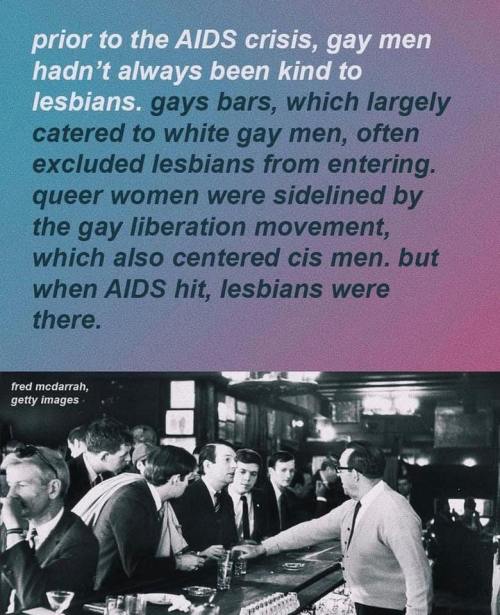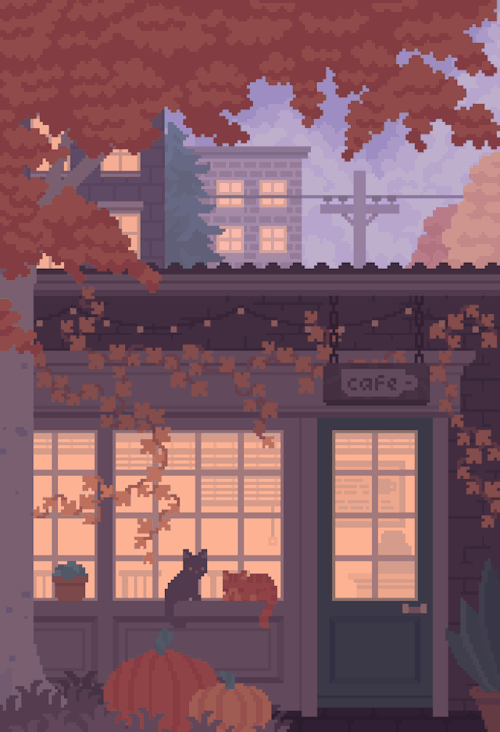Such A Nice Picture, And A Collection I Am On My Way To Building :)
Such a nice picture, and a collection I am on my way to building :)

An assemblage of coffee things, because I like coffee a normal amount. I wanted to focus on some of the ingenious methods of making good coffee at home. Lately I’m enjoying a cozy little pour over - I like the way it requires you to take a few meditative minutes to prepare, but that cleanup is the work of moments, and it produces such a lovely coffee - assuming the beans are good, of course. (I’m enjoying a nice washed Colombian gesha at home right now - it’s so lovely and bright!) What’s your favourite coffee making method?
More Posts from Thisdamnedwierdinternet and Others

like to charge reblog to cast


"Is there anybody out there, who is lost and hurt and lonely, too? Are they bleeding all your colours into one? And if you come undone, as if you'd been run through some catapult, it fired you, you wonder if your chance'll ever come, well, if you're stuck in square one."
Credits to the artist: Kirokaze // DeviantArt https://www.deviantart.com/kirokaze
Fun Fact: if you record someone doing something weird on the train to post online, I am going to fucking break your spine in half <3










The LGBTQ community has seen controversy regarding acceptance of different groups (bisexual and transgender individuals have sometimes been marginalized by the larger community), but the term LGBT has been a positive symbol of inclusion and reflects the embrace of different identities and that we’re stronger together and need each other. While there are differences, we all face many of the same challenges from broader society.
In the 1960′s, in wider society the meaning of the word gay transitioned from ‘happy’ or ‘carefree’ to predominantly mean ‘homosexual’ as they adopted the word as was used by homosexual men, except that society also used it as an umbrella term that meant anyone who wasn’t cisgender or heterosexual. The wider queer community embraced the word ‘gay’ as a mark of pride.
The modern fight for queer rights is considered to have begun with The Stonewall Riots in 1969 and was called the Gay Liberation Movement and the Gay Rights Movement.
The acronym GLB surfaced around this time to also include Lesbian and Bisexual people who felt “gay” wasn’t inclusive of their identities.
Early in the gay rights movement, gay men were largely the ones running the show and there was a focus on men’s issues. Lesbians were unhappy that gay men dominated the leadership and ignored their needs and the feminist fight. As a result, lesbians tended to focus their attention on the Women’s Rights Movement which was happening at the same time. This dominance by gay men was seen as yet one more example of patriarchy and sexism.
In the 1970′s, sexism and homophobia existed in more virulent forms and those biases against lesbians also made it hard for them to find their voices within women’s liberation movements. Betty Friedan, the founder of the National Organization for Women (NOW), commented that lesbians were a “lavender menace” that threatened the political efficacy of the organization and of feminism and many women felt including lesbians was a detriment.
In the 80s and 90s, a huge portion of gay men were suffering from AIDS while the lesbian community was largely unaffected. Lesbians helped gay men with medical care and were a massive part of the activism surrounding the gay community and AIDS. This willingness to support gay men in their time of need sparked a closer, more supportive relationship between both groups, and the gay community became more receptive to feminist ideals and goals.
Approaching the 1990′s it was clear that GLB referred to sexual identity and wasn’t inclusive of gender identity and T should be added, especially since trans activist have long been at the forefront of the community’s fight for rights and acceptance, from Stonewall onward. Some argued that T should not be added, but many gay, lesbian and bisexual people pointed out that they also transgress established gender norms and therefore the GLB acronym should include gender identities and they pushed to include T in the acronym.
GLBT became LGBT as a way to honor the tremendous work the lesbian community did during the AIDS crisis.
Towards the end of the 1990s and into the 2000s, movements took place to add additional letters to the acronym to recognize Intersex, Asexual, Aromantic, Agender, and others. As the acronym grew to LGBTIQ, LGBTQIA, LGBTQIAA, many complained this was becoming unwieldy and started using a ‘+’ to show LGBT aren’t the only identities in the community and this became more common, whether as LGBT+ or LGBTQ+.
In the 2010′s, the process of reclaiming the word “queer” that began in the 1980′s was largely accomplished. In the 2020′s the LGBTQ+ acronym is used less often as Queer is becoming the more common term to represent the community.





Lesbian activist Sandi Toksvig:
//“I could weep. I don’t get it. It’s beyond me,” the former Great British Bake Off host said, “When the feminist movement started in the 60s and 70s, lesbians were often excluded, because we were told that we would make the movement less palatable.
“I have been excluded myself, so how could I do that to someone else? It fills me with rage.”//


november 🍂 enjoy the colors before they're gone


Capitalism at its finest.
-
 jinxylolo liked this · 5 months ago
jinxylolo liked this · 5 months ago -
 enchantingcheesecakepersona liked this · 7 months ago
enchantingcheesecakepersona liked this · 7 months ago -
 amelia-cafe reblogged this · 8 months ago
amelia-cafe reblogged this · 8 months ago -
 amelia-cafe liked this · 8 months ago
amelia-cafe liked this · 8 months ago -
 theyre-not-sandshoes37 reblogged this · 10 months ago
theyre-not-sandshoes37 reblogged this · 10 months ago -
 theyre-not-sandshoes37 liked this · 10 months ago
theyre-not-sandshoes37 liked this · 10 months ago -
 softberrybi reblogged this · 10 months ago
softberrybi reblogged this · 10 months ago -
 lavenderemo reblogged this · 10 months ago
lavenderemo reblogged this · 10 months ago -
 lavenderemo liked this · 10 months ago
lavenderemo liked this · 10 months ago -
 violetbooklover liked this · 11 months ago
violetbooklover liked this · 11 months ago -
 fogbustercoffee liked this · 1 year ago
fogbustercoffee liked this · 1 year ago -
 a-n-n-am-a-r-i-a reblogged this · 1 year ago
a-n-n-am-a-r-i-a reblogged this · 1 year ago -
 thegreatpanic liked this · 1 year ago
thegreatpanic liked this · 1 year ago -
 whimiscott liked this · 1 year ago
whimiscott liked this · 1 year ago -
 gogi-ran liked this · 1 year ago
gogi-ran liked this · 1 year ago -
 software-instabilitie liked this · 1 year ago
software-instabilitie liked this · 1 year ago -
 worldknees liked this · 1 year ago
worldknees liked this · 1 year ago -
 rufaidamohammed liked this · 1 year ago
rufaidamohammed liked this · 1 year ago -
 rapierdagger liked this · 1 year ago
rapierdagger liked this · 1 year ago -
 aucaffeine liked this · 2 years ago
aucaffeine liked this · 2 years ago -
 last-day-dreams liked this · 2 years ago
last-day-dreams liked this · 2 years ago -
 chilltobebrill liked this · 2 years ago
chilltobebrill liked this · 2 years ago -
 hookitall liked this · 2 years ago
hookitall liked this · 2 years ago -
 themarlinsandthetrout liked this · 2 years ago
themarlinsandthetrout liked this · 2 years ago -
 booksandcofffeeee liked this · 2 years ago
booksandcofffeeee liked this · 2 years ago -
 ventosul73 liked this · 2 years ago
ventosul73 liked this · 2 years ago -
 crappycrapolice reblogged this · 2 years ago
crappycrapolice reblogged this · 2 years ago -
 evergreenpursuit liked this · 2 years ago
evergreenpursuit liked this · 2 years ago -
 danceswithsalmon liked this · 2 years ago
danceswithsalmon liked this · 2 years ago -
 justtryyourbestlove reblogged this · 2 years ago
justtryyourbestlove reblogged this · 2 years ago -
 crappycrapolice liked this · 2 years ago
crappycrapolice liked this · 2 years ago -
 greyhoundone reblogged this · 2 years ago
greyhoundone reblogged this · 2 years ago -
 thisdamnedwierdinternet reblogged this · 2 years ago
thisdamnedwierdinternet reblogged this · 2 years ago -
 lav3nd3rm0ss liked this · 2 years ago
lav3nd3rm0ss liked this · 2 years ago -
 peachflavoralcopop liked this · 2 years ago
peachflavoralcopop liked this · 2 years ago -
 melodramaticmonopoly-archive reblogged this · 2 years ago
melodramaticmonopoly-archive reblogged this · 2 years ago -
 melodramaticmonopoly liked this · 2 years ago
melodramaticmonopoly liked this · 2 years ago -
 stephadoo liked this · 2 years ago
stephadoo liked this · 2 years ago -
 fortress-mind liked this · 2 years ago
fortress-mind liked this · 2 years ago -
 whatthefoucault reblogged this · 2 years ago
whatthefoucault reblogged this · 2 years ago

18+ only, NSFW. My fandom crushes, post-anarchist socialist utopias, queer vibes, wierd interests, sex positive (and just sex) stuff and coffee nerd stuff. Queer socialist 20-something year old.
69 posts